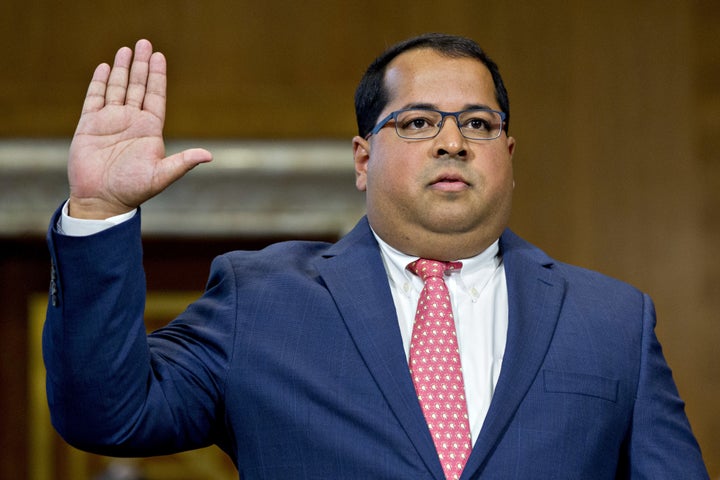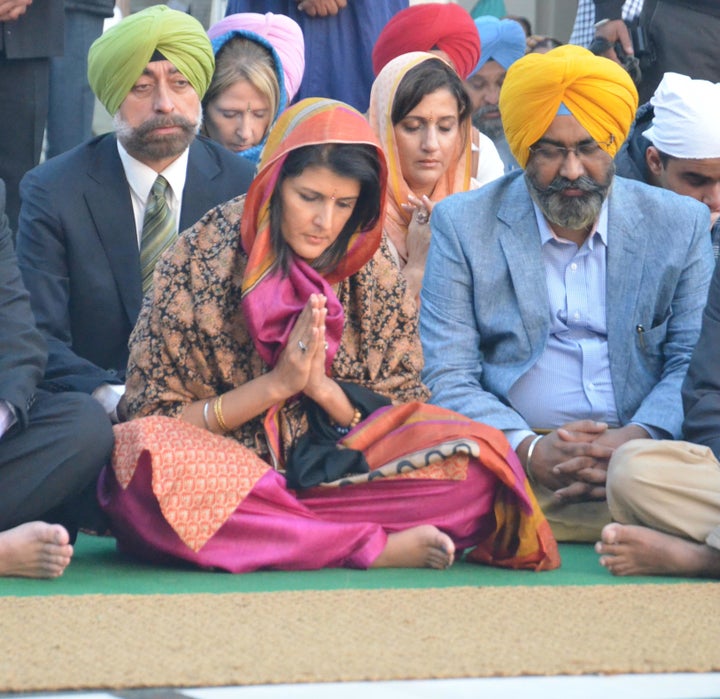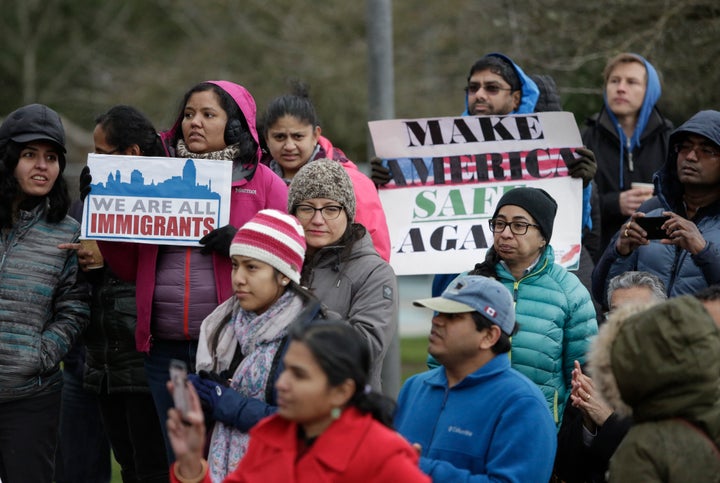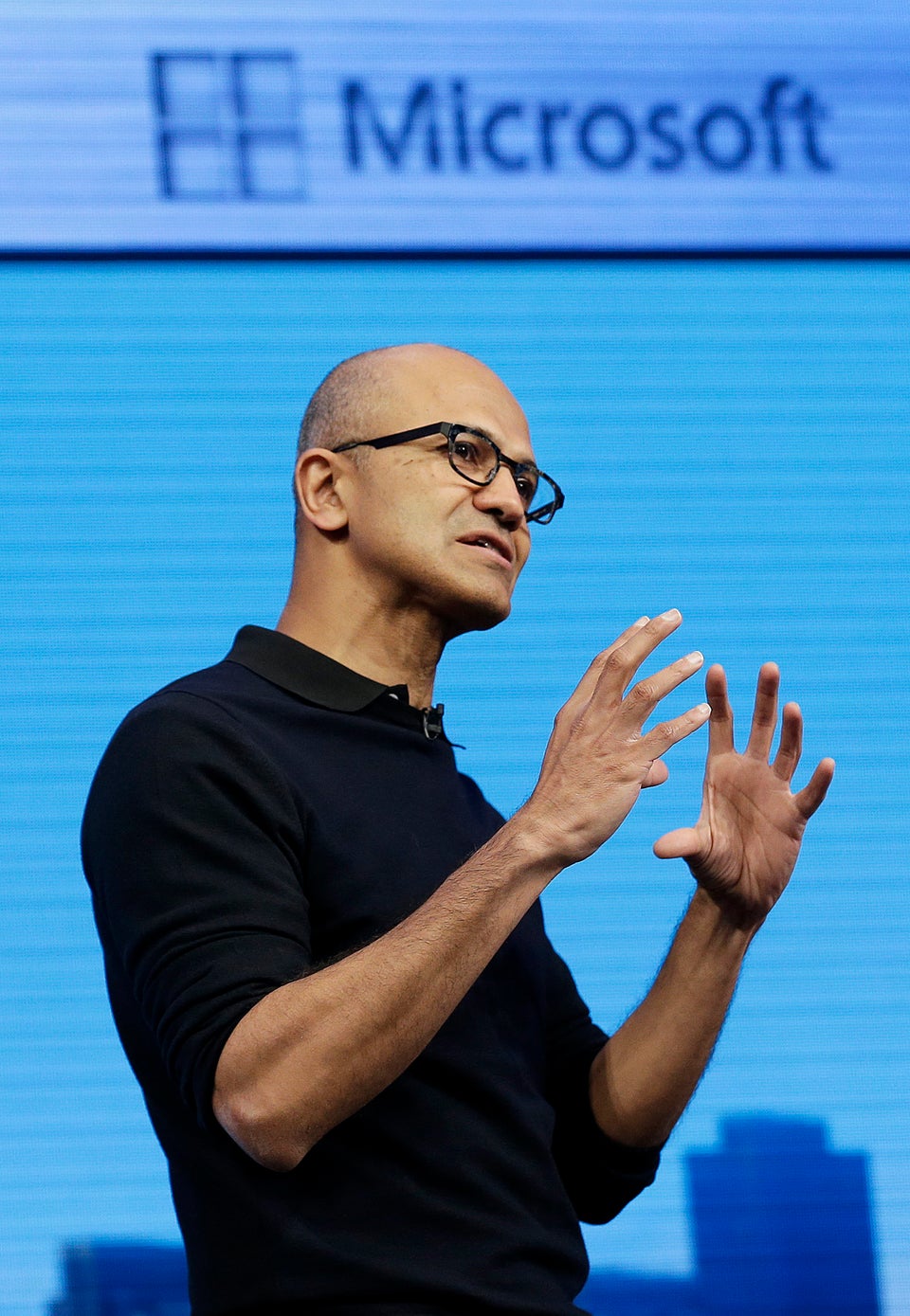
Last October, as then-candidate Donald Trump was barreling toward the end of a divisive presidential campaign, he made an unlikely pit stop in the non-battleground state of New Jersey.
In an arena in Edison filled with Indian celebrities, food and music, Trump made a prominent attempt to woo Indian-Americans.
“I am a big fan of Hindu and a big fan of India,” Trump declared. “Big, big fan.”
The bizarre phrasing, and all the absurd antics that took place at that rally, was much analyzed by Indian-Americans and the Indian press in the weeks after the charity event.
But despite Trump’s overture, Indian-Americans largely rejected him at the polls. Seventy-seven percent of Indian-Americans voted for Democratic candidate Hillary Clinton, while only 16 percent voted for Trump, according to the National Asian American Survey.
Against this backdrop of overwhelming support for the Democratic Party, it’s somewhat ironic that Indian-Americans are becoming the face of racial diversity in the president’s conservative and largely white administration.
Trump has appointed or nominated at least seven people to his administration who are of Indian descent, including Ajit Pai, chairman of the Federal Communications Commission, Neomi Rao, administrator of the Office of Information and Regulatory Affairs, and Seema Verma, administrator of the Centers for Medicare and Medicaid Services. Trump also tapped Vishal J. Amin, a senior counsel on the House Judiciary Committee, as the White House’s new intellectual property enforcement coordinator, and Neil Chatterjee, an energy adviser for Senate Majority Leader Mitch McConnell, as a member of the federal energy regulatory commission. Krishna R. Urs, a career member of the Foreign Service, was nominated to be the ambassador to Peru.
The new U.S. ambassador to the United Nations, Nikki Haley, is thought to be the first Indian-American woman appointed to a cabinet-level position. Other than Haley, there are currently only three other people of color in the Trump administration’s 24 cabinet or cabinet-level positions. The Obama administration had at least 10 people of color filling those spots.

These nominations set up an interesting dichotomy. On the one hand, several prominent Indian-Americans are now helping the Trump White House push its conservative agenda on everything from repealing the Affordable Care Act to overhauling government regulations and scrapping net neutrality rules.
But Indian-Americans in general have been loyal supporters of the Democratic Party, and tend to lean to the left politically when it comes to issues like raising the minimum wage, raising taxes on the rich and generally supporting a strong role for the federal government. All five people of Indian descent recently elected to Congress are Democrats.
‘Almost Accidental’ Diversity
Indian-Americans appear to be disproportionately represented in Trump’s nominations compared to other minority groups, said Karthick Ramakrishnan, a political science professor at the University of California, Riverside, who researches Asian Americans’ civic participation.
But Ramakrishnan suggests that the appointments don’t seem to be a conscious attempt on the White House’s part to diversify its ranks. Rather, the choices appear to be about filling vacancies with experienced and highly connected individuals who are ideologically aligned with the Trump administration ― some of whom just happen to be of Indian descent.
“As far as we can tell, the Trump administration is not taking race or ethnicity into account much, if at all, in terms of appointments, unlike the Obama administration, which was trying to have as diverse set of appointments as possible,” Ramakrishnan said. “I think it’s almost incidental that these people happen to be Indian-American. The fact that they’re Indian-American [doesn’t appear] to make any difference over and beyond what their prior background or political orientation is.”

Verma, Amin, Urs, Haley, Pai and Chatterjee declined to be interviewed by HuffPost for this article. Rao did not respond to repeated requests for an interview.
Sangay Mishra, an assistant professor of political science at Drew University, agreed with Ramakrishnan that there doesn’t seem to be a systematic attempt by the Trump administration to diversify its nominations.
The GOP’s Evangelical And Anti-Immigrant Shift
Over the past few years, Mishra said, the GOP has transformed itself into a party that caters toward evangelical Christians and isn’t perceived as being open to ethnic minorities and immigrants.
Indian-Americans, on the other hand, are a religiously diverse group composed of Hindus, Muslims, Sikhs and Christians.
“The Republican party has veered toward a more explicitly Christian, evangelical approach that has also turned off the [Indian-American] community,” Mishra said. “And on issues like gun control, the role of the government in economic welfare, health reform, questions of war, on all of these questions, you see much more closeness between the attitudes which Indian-Americans have and the policy positions of the Democratic party.”
At the same time, Mishra said because of this ideological divide, it’s often easier for conservative Indian-Americans to stand out. As the author of a book on the political lives of South Asian Americans, he’s interviewed a number of Indian-Americans interested in getting involved in politics. Many told him that it’s easier for ambitious individuals to move up the ladder in the Republican Party than in the Democratic Party, since there’s a smaller pool of minority candidates.
“In the Republican Party, if you’re a minority face and you’re serious about succeeding, then there are chances you’ll get an opportunity,” Mishra said. “Even though Indian-Americans are en masse voting for the Democratic Party, given the professional, economic and educational profile of the community, there are a significant number of professionals and technocrats who have made their way through the bureaucracy and party apparatus to get important positions.”
“In the Republican Party, if you’re a minority face and you’re serious about succeeding, then there are chances you’ll get an opportunity.”
- Sangay Mishra
A Divergence In Viewpoints
Rep. Ro Khanna (D-Calif.) said he’s glad to see Indian-Americans participating in politics, regardless of the administration. At the same time, he said diversity in the Trump administration’s ranks doesn’t necessarily mean that the views and positions of the Indian-American community as a whole will be heard in the White House.
For example, Trump’s pick for FCC chairman, Ajit Pai, has announced plans to roll back Obama-era regulations of high-speed internet providers, which were put in place to ensure an open internet where content is delivered to consumers at similar speeds. Tech companies like Amazon, Facebook, Google and Twitter led protests against Pai’s plans.
Khanna, whose constituency includes voters in Silicon Valley, said that Pai’s approach is “opposed to what most Indian-American entrepreneurs and technology leaders believe.”
“He’s certainly not representing their views,” Khanna said.

Khanna also said that there could be a divergence between Indian-Americans at the White House and the general community on foreign policy.
“I think Nikki Haley’s view on more of an aggressive, hawkish foreign policy is not in line with Indian-Americans’ traditional emphasis on diplomacy, coalition building and finding diplomatic solutions,” Khanna said.
A similar dynamic could be taking place on the issue of health care. The National Asian American Survey showed that 71 percent of Indian-Americans say that the cost of taking care of elderly parents is a very serious or fairly serious problem for their families. Sixty-seven percent say that the cost of medical care is a very serious or fairly serious concern.
As the administrator of the Centers for Medicare and Medicaid Services, Verma has emerged as a key player in Republicans’ controversial quest to repeal and replace the Affordable Care Act. She is a health policy expert from Indiana who crafted an alternative to Medicaid in her state that won the approval of conservatives.
Rep. Raja Krishnamoorthi (D-Ill.) said he’s not familiar with Verma’s personal viewpoints on health care. But he thinks the agency she heads may be at odds with a large segment of the Indian community.
“I have not met too many Indian-Americans happy with the American Health Care Act or the Better Care Reconciliation Act,” he said. “Not to say they’re totally in love with the Affordable Care Act, they believe improvements are needed. But a lot of them feel the AHCA or BCRA would be far worse.”

A Duty To Raise The Alarm On Discrimination?
Indian-Americans have also grown increasingly concerned about experiencing discrimination.
Since 9/11, the U.S. Department of Justice has investigated over 800 incidents involving violence, threats, vandalism and arson against Arab-Americans, Muslims, Sikhs, South-Asian Americans and other individuals perceived to be of Middle Eastern origin.
In the year leading up to the 2016 election, there was a significant spike in hate violence and xenophobic political rhetoric targeting South Asian, Muslim, Sikh, Hindu, Middle Eastern and Arab communities, according to the advocacy group South Asian Americans Leading Together (SAALT).

The February killing of an Indian immigrant, Srinivas Kuchibhotla, sent shockwaves through the community. Some Indian-Americans questioned whether Trump had done enough to condemn the shooting. For others, the murder was a reminder that no amount of financial or social success can protect Indians and other brown people from racism.
As unelected officials, the Indian-Americans in the Trump administration aren’t tasked with representing the views of the wider community. Still, some scholars, activists and politicians are wondering whether they will use their power and influence to advocate for the community.
Indian-Americans working for the Trump administration can’t distance themselves from its “vitriolic tone and policies,” said Deepa Iyer, an Indian-American activist and former director of SAALT.
“We should be asking whether and how Indian-American appointees are weighing in with the administration about the impact of xenophobic rhetoric and discriminatory policies on communities of color, immigrants and refugees,” she said. “For example, have the current Indian-American appointees expressed concerns about the link between hostile political rhetoric and the uptick in hate violence including the murder of Srinivas Kuchibhotla in Kansas? Have they raised the alarm about the impact of the Muslim and refugee bans on communities?”
“We should be asking whether and how Indian-American appointees are weighing in with the administration about the impact of xenophobic rhetoric and discriminatory policies on communities of color, immigrants and refugees.”
- Deepa Iyer
Indian-Americans Not Likely To Be Swayed By Diverse Appointments
Mishra said it’s possible that in the future, the Trump White House will use its Indian-American appointees to try to burnish an image of inclusivity. But he believes it’s unlikely to make any real impact on the political loyalties of the Indian-American community.
“The policies the Trump administration is putting forward isn’t making the Indian-American community very happy,” Mishra said. “Whether it’s [their approach to] hate crimes, the H-1b visa, their overall approach about immigration, or more broadly, their white, ethno-national approach to politics, all of that is not making the Indian-American community any more open to the Trump administration and the Republican Party.”
Ramakrishnan agreed that it’s unlikely that Trump will be making much progress in influencing the general political attitudes the Indian-American community because of his appointments.
“I think Indian-Americans and certainly the Indian immigrant press certainly takes notice when people get appointed, and there’s a little bit of ethnic pride knowing there are Indian-Americans in powerful positions, regardless of the administration,” Ramakrishnan said. “But I don’t think Trump is making inroads with the Indian-American community based on the appointments he has made. Policies like the immigration ban, anti-immigrant rhetoric, the Affordable Care Act, are issues that Indian Americans care about. [Trump’s positions] are opposed to the way the vast majority of Indian-Americans stand.”

